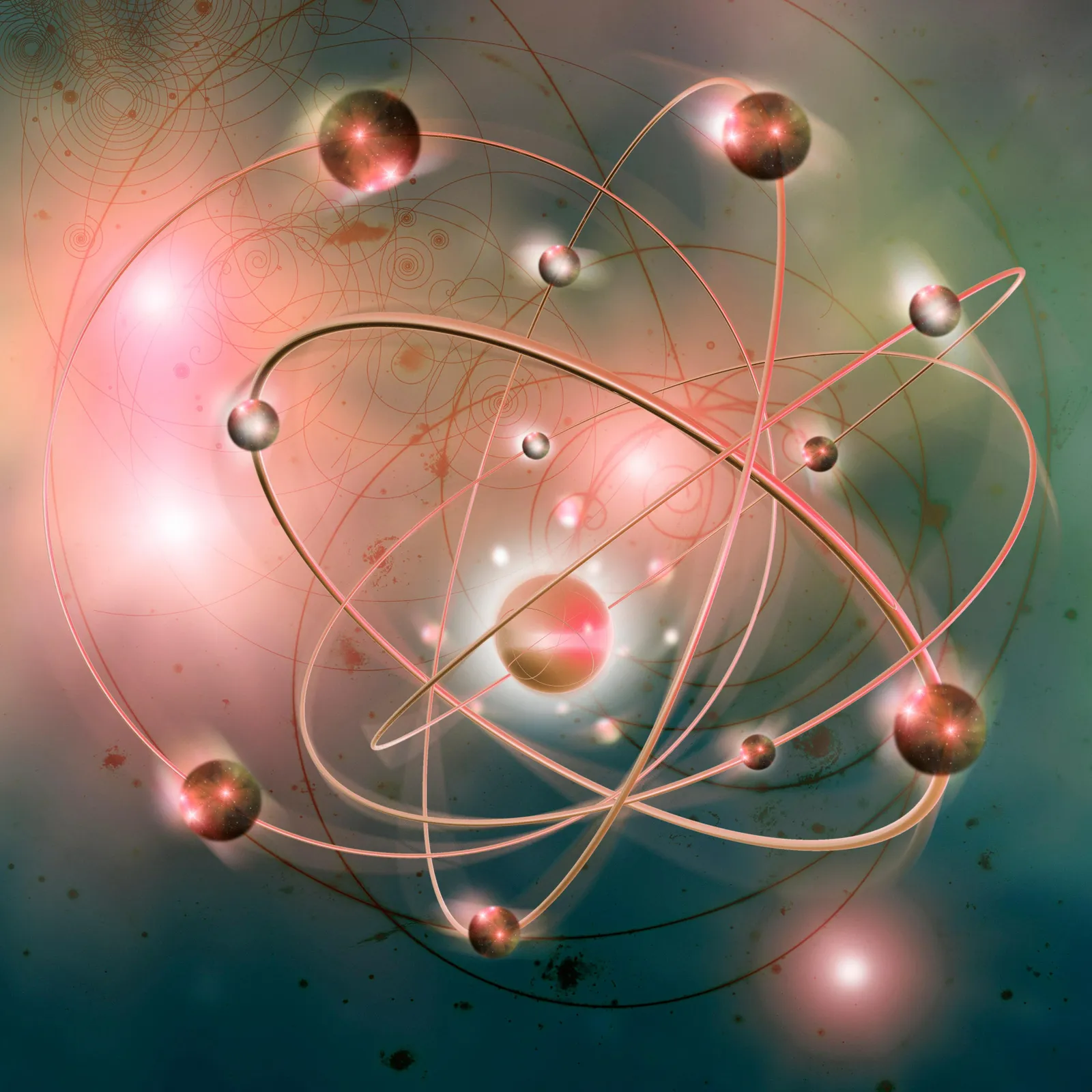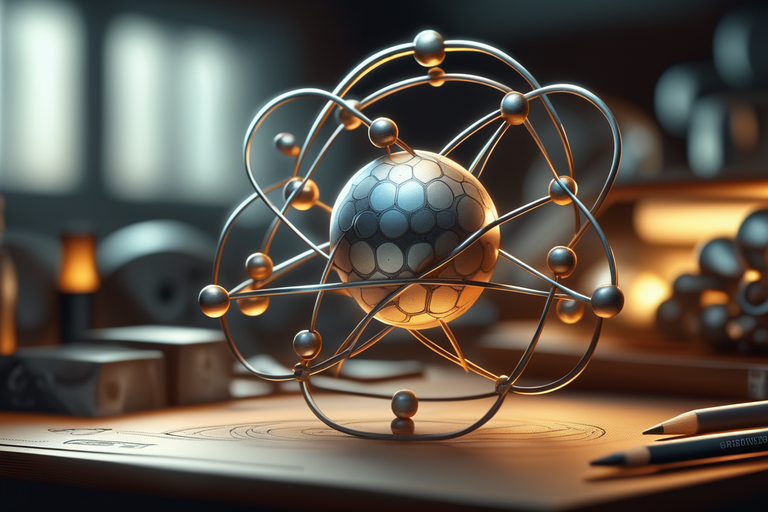Unveiling the Mysteries of Quantum Physics: A Journey into the Subatomic Realm

If you have specific subtopics or aspects you'd like me to elaborate on, please let me know, and I can delve deeper into those areas. --- # Unveiling the Mysteries of Quantum Physics: A Journey into the Subatomic Realm ## Introduction Quantum physics, also known as quantum mechanics, stands as one of the most revolutionary and mind-bending theories in the history of science. Born out of the need to understand the behavior of matter and energy at the smallest scales, quantum physics has challenged our classical intuitions and reshaped the way we perceive the fundamental nature of reality. ## The Birth of Quantum Physics The roots of quantum theory trace back to the early 20th century, as physicists grappled with phenomena that classical physics couldn't explain. The blackbody radiation problem and the photoelectric effect were among the puzzles that led luminaries like Max Planck and Albert Einstein to question the classical understanding of physics. In 1900, Planck introduced the concept of quantization of energy, suggesting that energy is emitted or absorbed in discrete packets, or "quanta." This groundbreaking idea laid the foundation for the quantum revolution. ## Key Principles of Quantum Physics ### 1. **Wave-Particle Duality:** One of the central tenets of quantum physics is the wave-particle duality. Unlike classical physics, where particles were considered strictly as particles and waves strictly as waves, quantum particles, such as electrons and photons, exhibit both particle-like and wave-like properties. This dual nature challenges our intuitive understanding of the physical world. ### 2. **Quantum Superposition:** Quantum superposition allows particles to exist in multiple states simultaneously. 

 Applications of Quantum Physics Quantum mechanics is not merely a theoretical framework; it has given rise to an array of technological advancements and practical applications. ### 1. **Quantum Computing:** Quantum computing harnesses the principles of quantum mechanics to perform computations at speeds unattainable by classical computers. Quantum bits, or qubits, can exist in multiple states simultaneously, allowing for parallel processing and potentially solving certain problems exponentially faster. ### 2. **Quantum Cryptography:** Quantum cryptography leverages the principles of quantum mechanics to create secure communication channels. The act of measuring a quantum system alters its state, making any eavesdropping attempt detectable. ### 3. **Quantum Sensing:** Quantum sensors, such as atomic clocks and magnetometers, exploit quantum principles for unparalleled precision. These devices have applications in fields ranging from navigation to medical imaging. ## Challenges and Unanswered Questions While quantum physics has brought about groundbreaking discoveries and technologies, it is not without its enigmas. The measurement problem, the nature of wave function collapse, and the quest for a unified theory of quantum gravity are among the unresolved puzzles that continue to intrigue physicists. ## Quantum Physics in Popular Culture Quantum physics has permeated popular culture, influencing literature, films, and even philosophy. Concepts like parallel universes, time dilation, and the manipulation of reality have become staples in science fiction, reflecting the profound impact of quantum ideas on the human imagination. ## The Future of Quantum Physics As we venture further into the 21st century, quantum physics remains at the forefront of scientific exploration. Ongoing research delves into quantum entanglement for quantum communication, the development of more robust quantum computers, and the quest for a comprehensive understanding of the quantum realm. In conclusion, quantum physics stands as a testament to humanity's relentless pursuit of understanding the fundamental nature of the universe. From the bizarre and counterintuitive principles to the groundbreaking technologies
Applications of Quantum Physics Quantum mechanics is not merely a theoretical framework; it has given rise to an array of technological advancements and practical applications. ### 1. **Quantum Computing:** Quantum computing harnesses the principles of quantum mechanics to perform computations at speeds unattainable by classical computers. Quantum bits, or qubits, can exist in multiple states simultaneously, allowing for parallel processing and potentially solving certain problems exponentially faster. ### 2. **Quantum Cryptography:** Quantum cryptography leverages the principles of quantum mechanics to create secure communication channels. The act of measuring a quantum system alters its state, making any eavesdropping attempt detectable. ### 3. **Quantum Sensing:** Quantum sensors, such as atomic clocks and magnetometers, exploit quantum principles for unparalleled precision. These devices have applications in fields ranging from navigation to medical imaging. ## Challenges and Unanswered Questions While quantum physics has brought about groundbreaking discoveries and technologies, it is not without its enigmas. The measurement problem, the nature of wave function collapse, and the quest for a unified theory of quantum gravity are among the unresolved puzzles that continue to intrigue physicists. ## Quantum Physics in Popular Culture Quantum physics has permeated popular culture, influencing literature, films, and even philosophy. Concepts like parallel universes, time dilation, and the manipulation of reality have become staples in science fiction, reflecting the profound impact of quantum ideas on the human imagination. ## The Future of Quantum Physics As we venture further into the 21st century, quantum physics remains at the forefront of scientific exploration. Ongoing research delves into quantum entanglement for quantum communication, the development of more robust quantum computers, and the quest for a comprehensive understanding of the quantum realm. In conclusion, quantum physics stands as a testament to humanity's relentless pursuit of understanding the fundamental nature of the universe. From the bizarre and counterintuitive principles to the groundbreaking technologies If you're referring to the most influential figures in the field of quantum physics, several individuals have played pivotal roles in shaping our understanding of the quantum realm. Here are some of the most notable figures, often referred to as the "founding fathers" of quantum mechanics: 1. **Max Planck (1858–1947):** - German physicist Max Planck is often considered the father of quantum theory. In 1900, he introduced the concept of quantization of energy to explain blackbody radiation, laying the groundwork for quantum mechanics. 2. **Albert Einstein (1879–1955):** - Einstein's contributions to quantum physics are particularly notable for his explanation of the photoelectric effect in 1905. His work on the particle-like properties of light and the concept of photons challenged classical physics. 3. **Niels Bohr (1885–1962):** - Danish physicist Niels Bohr developed the Bohr model of the atom, introducing the idea of quantized angular momentum and discrete energy levels. His model successfully explained the spectral lines of hydrogen. 4. **Werner Heisenberg (1901–1976):** - Heisenberg formulated the famous Heisenberg Uncertainty Principle in 1927, which states that certain pairs of properties (like position and momentum) cannot both be precisely known simultaneously. This principle is foundational in quantum mechanics. 5. **Erwin Schrödinger (1887–1961):** - Austrian physicist Schrödinger developed wave mechanics and formulated the Schrödinger equation in 1925. His wave equation provided a mathematical description of how the quantum state of a physical system changes over time. 6. **Paul Dirac (1902–1984):** - British physicist Paul Dirac made significant contributions to quantum mechanics, particularly in the development of quantum field theory and quantum electrodynamics. He shared the Nobel Prize with Schrödinger in 1933. 7. **Louis de Broglie (1892–1987):** - French physicist Louis de Broglie proposed the wave-particle duality of matter in 1924, suggesting that particles, like electrons, exhibit both wave-like and particle-like behaviors. This idea was later confirmed experimentally. 8. **Max Born (1882–1970):** - German physicist Max Born made crucial contributions to the probabilistic interpretation of the wave function, emphasizing that the square of the wave function represents the probability density of finding a particle. 9. **Wolfgang Pauli (1900–1958):** - Austrian physicist Wolfgang Pauli formulated the Pauli Exclusion Principle, which states that no two electrons in an atom can occupy the same quantum state simultaneously. This principle is fundamental to understanding the structure of atoms. 10. **Max Planck (1858–1947):** - German physicist Max Planck is often considered the father of quantum theory. In 1900, he introduced the concept of quantization of energy to explain blackbody radiation, laying the groundwork for quantum mechanics. These physicists, along with others, collectively contributed to the development of quantum mechanics, shaping our understanding of the fundamental principles that govern the behavior of matter and energy at the smallest scales.
If you're referring to the most influential figures in the field of quantum physics, several individuals have played pivotal roles in shaping our understanding of the quantum realm. Here are some of the most notable figures, often referred to as the "founding fathers" of quantum mechanics: 1. **Max Planck (1858–1947):** - German physicist Max Planck is often considered the father of quantum theory. In 1900, he introduced the concept of quantization of energy to explain blackbody radiation, laying the groundwork for quantum mechanics. 2. **Albert Einstein (1879–1955):** - Einstein's contributions to quantum physics are particularly notable for his explanation of the photoelectric effect in 1905. His work on the particle-like properties of light and the concept of photons challenged classical physics. 3. **Niels Bohr (1885–1962):** - Danish physicist Niels Bohr developed the Bohr model of the atom, introducing the idea of quantized angular momentum and discrete energy levels. His model successfully explained the spectral lines of hydrogen. 4. **Werner Heisenberg (1901–1976):** - Heisenberg formulated the famous Heisenberg Uncertainty Principle in 1927, which states that certain pairs of properties (like position and momentum) cannot both be precisely known simultaneously. This principle is foundational in quantum mechanics. 5. **Erwin Schrödinger (1887–1961):** - Austrian physicist Schrödinger developed wave mechanics and formulated the Schrödinger equation in 1925. His wave equation provided a mathematical description of how the quantum state of a physical system changes over time. 6. **Paul Dirac (1902–1984):** - British physicist Paul Dirac made significant contributions to quantum mechanics, particularly in the development of quantum field theory and quantum electrodynamics. He shared the Nobel Prize with Schrödinger in 1933. 7. **Louis de Broglie (1892–1987):** - French physicist Louis de Broglie proposed the wave-particle duality of matter in 1924, suggesting that particles, like electrons, exhibit both wave-like and particle-like behaviors. This idea was later confirmed experimentally. 8. **Max Born (1882–1970):** - German physicist Max Born made crucial contributions to the probabilistic interpretation of the wave function, emphasizing that the square of the wave function represents the probability density of finding a particle. 9. **Wolfgang Pauli (1900–1958):** - Austrian physicist Wolfgang Pauli formulated the Pauli Exclusion Principle, which states that no two electrons in an atom can occupy the same quantum state simultaneously. This principle is fundamental to understanding the structure of atoms. 10. **Max Planck (1858–1947):** - German physicist Max Planck is often considered the father of quantum theory. In 1900, he introduced the concept of quantization of energy to explain blackbody radiation, laying the groundwork for quantum mechanics. These physicists, along with others, collectively contributed to the development of quantum mechanics, shaping our understanding of the fundamental principles that govern the behavior of matter and energy at the smallest scales.



































































